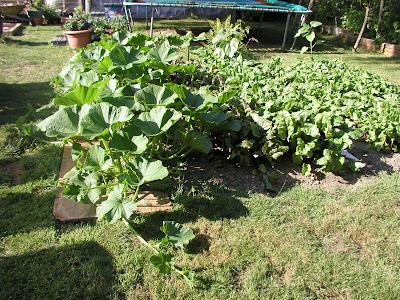Beets are the epitome of abundance. The seed of the beet is actually a bunch of tiny little flowers, and each flower grows into a beet. Hence the reason why they require lots of thinning. One beet "seed" grows into a bunch of beets, not just one beet.
But even then I have found that once your early obligatory thinnings (thinnings go into salads) have been done, you can leave them for a bit and they seem to find the wiggle room. On the first harvest you get nice smooth round beets excellent for canning. This further thins the patch so that the ones left will grow to be the big[ger] ones.
I was also left with a huge heap of beet leaves. They went into the compost, and a few into the garden beds. Beet leaves are even more nutritious than the roots. After four inches (after salad stage) they are good to be cooked. If you throw them in the compost it's not a waste, as those nutrients and minerals in the leaves will go into your soil.
*
Today I pulled the walla wallas to cure in the sun. The weather forecast seems to be sun for a while, and no rain. You can't leave onions to cure in wet conditions. After three days of curing (maybe two for these since they smaller) they will go inside to dry for a couple weeks.

I'm pleased at the size of the onions, since they were started late from seed. I was thinking they were only going to get golf ball size at best.
*
Here are those leeks that I transplanted into two areas of a bed. I still have more left in the greenhouse to be transplanted.


If I didn't know any better I would be despairing that they didn't make it past transplanting, but that's just outer leaf die off; and in this hot weather it is inevitable. The leeks will do fine.
They are in those trenches so that as they grow, you fill in the trench a bit each time just to the first leaf joint so that the leeks get blanched - without getting dirt in between the layers, or at least not much.
*
Attack of the pumpkins! The flowers this morning were filling the air with their fragrance and the patch was swarming with bee (various kinds of bees) activity.
You see those flowers with the ovary on the bottom.


Those are the female flowers that grow into pumpkins after being pollinated by the males that are discernable by the absence of any ovary. The pollination is by bees - obviously. Some bees look like they fall asleep in those pumpkin flowers, like they're drunk.
*
They also like the muskmelon flowers, but those are smaller. I think the muskmelon has got to be the fastest thing I've seen growing, by which I mean the actual melon.



















































